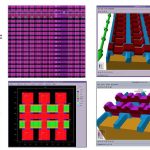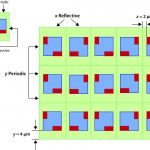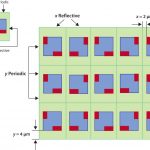Traditional, rule based, RC extractors rely on a substantial base of assumptions, which are increasingly proving unreliable. Having accurate RC extraction results for parasitic R’s and C’s is extremely important for ensuring proper circuit operation and for optimizing performance and power. Advanced process nodes are making… Read More
Tag: field solver
Free Webinar: Silvaco 3D Solver Based Extraction for Device and Circuit Designers
Designers spend a lot of time looking at their layouts in 2D. This is done naturally because viewing in 2D is faster and simpler than in 3D. It helps that humans are good at extrapolating from 2D to 3D. Analysis software, such as extraction software also spend a lot of time looking at layouts in 2D. While this is fine for approximate results,… Read More
MEMS Require 3D Field Solver for Accurate Cap Values
MEMS devices have become extremely important and common. Freescale last year reported its combined MEMS shipments exceeded 2 billion units. If we just examine how many accelerometers we each probably own today, it is easy to see why the market for these products is growing so rapidly. The first and most obvious device is our cell… Read More
New Frontiers in MEMS and Their Enablers
With the 51[SUP]st[/SUP] DACapproaching quickly, I spent some time last week-end to look around about what new trends, technologies and innovations will be most talked about during DAC. Every year, I find some exciting new technologies in the semiconductor industry and the overall semiconductor ecosystem that get wider exposure… Read More
Quick MEMS Development Through Virtual Fabrication
The design and manufacture of MEMS is very different and in many ways more complex process than even the most advanced ICs. MEMS involve multiple degrees of freedom (i.e. the device to exhibit different characteristics under different physical state, motion or mechanics), making fabrication of MEMS extremely complex; and hence… Read More
Advanced Memory Cell Characterization with Calibre xACT 3D
Advanced process technologies for manufacturing computer chips enable more functionality, higher performance, and low power through smaller sizes. Memory bits on a chip are predicted to double every two years to keep up with the demand for increased performance.
To meet these new requirements for performance and power, memory… Read More
Reducing the Need for Guardbanding Flash ADC Designs
Flash analog-to-digital converters (ADCs) are commonly used in high-frequency applications such as satellite communications, sampling oscilloscopes, and radar detection. Flash ADC is preferred over other ADC architectures because it is extremely fast and quite simple. However, flash ADC typically requires twice as many… Read More
Memory Cell Characterization with a Fast 3D Field Solver
Memory designers need to predict the timing, current and power of their designs with high accuracy before tape-out to ensure that all the design goals will be met. Extracting the parasitic values from the IC layout and then running circuit simulation is a trusted methodology however the accuracy of the results ultimately depend… Read More









